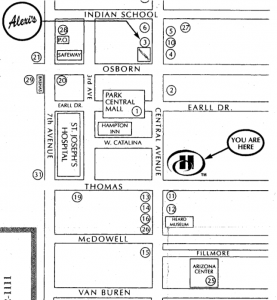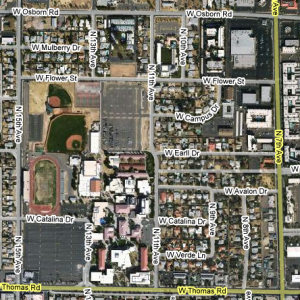In 2004, the Massachusetts Bay Transportation Authority closed four stops on the B Branch of the Green Line, to the approval of almost 73% of riders surveyed. The stops remain closed today. Now it’s time to close more.
Eliminating stops ultimately makes trips faster. Each stop requires trains to accelerate and decelerate, and more importantly adds hold time at the platform as passengers board and disembark. On crowded trips, the boarding process alone can take upwards of a minute at every stop even when everyone hurries.
The goal in any mass transit system must be to separate stops as widely as possible without unnecessarily inconveniencing riders. The question is what distance is both “far enough” without being “too far.”
Underground stations on the Green Line between Government Center and Kenmore (where B trains run) are spaced 583 meters apart, on average.* That’s about the distance diagonally across Boston Common, and about the same density of stops in Manhattan. Of course, passengers will generally walk only half that distance to get to the closest station.
Above ground, however, between Kenmore and Packard’s Corner, stops are only 306 meters apart, or about the length of a single crosstown block in Manhattan. Imagine a New York subway train stopping every block! Some of these need to be eliminated.
Of the eight stops in question, the shortest trips are from Boston University East to Boston University Central and from Boston University West to St. Paul Street. The middle segment, from West to Central, is the longest.
Suppose we keep West and Central as they are, then, and eliminate the adjacent stops, beginning with St. Paul Street, barely a block away. Babcock Street could also go, putting the three remaining stations 416 and 546 meters apart, respectively. That’s about the underground average.
Across the turnpike, Boston University East is also a perfect candidate for removal based on distance, and I support that, but it’s also benefited immensely from the costly beautification work done there just recently, so I don’t have high hopes for its elimination.
The only valid counterargument I’ve heard to eliminating any of these stops is that the individual platforms are not large enough to support the required number of passengers. In other words, the reason St. Paul Street and Boston University West are practically touching is so they can act in combination as a larger platform.
Anecdotally, I’ve never seen such a problem. The crowds on these platforms are light, even on heavy rush hour trips that are far behind schedule. During the Boston University Commencement, which surely generates the heaviest travel in the area, crowds would overhwlem any platform, which is why we always see MBTA staff supervising operations (and, at least last year, manually turning the entire platform into a fare-controlled area).
However, if there’s real evidence against these platforms’ adequacy, there are several solutions. First, they can easily be lenghtened. Even if four-car trains will never arrive (as seems likely, since we have yet to see even three-car trains in regular service), a four-car platform is perfectly usable. Second, and admittedly costlier, sacrificing a few parking spaces would allow ample room to widen the platforms into the street — a small price, even in Boston.
Most importantly, crowds at every platform will diminish as service speeds up. Fewer people can gather during a five-minute window between trains than can in a window that’s 15 minutes long.
We need to eliminate these stops. Let’s skip over them for six months, and if crowds on any platform truly become unmanageable, we can put them back in just as easily as they came out. If, instead, there’s no harm and service gets faster, at least 73% of riders will be made happier.
*I performed all measurements in Google Earth using the “ruler” tool. For underground stations, I used Google’s placement of the station icon to estimate the platform’s position.


